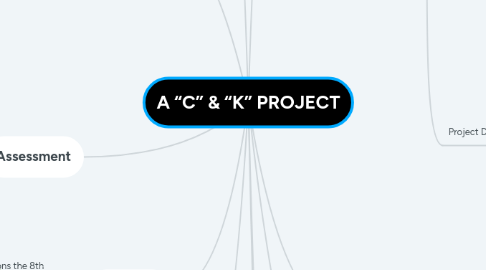
1. Rubrics:
1.1. Exhibition Event
1.2. Cross-curricular blending and resources
1.3. Technology integration & app-smashing proficiency
1.4. Student expectations and group work/collaboration
2. Standards Addressed
2.1. RL.11-12.1
2.2. RL.11.12-2
2.3. RL.11.12-3
2.4. RL.11.12-4
2.5. RL.11.12-5
2.6. RI.11-12.7
2.7. W.11-12.1
2.8. W.11-12.2
2.9. W.11-12.6
2.10. W.11-12.7
2.11. W.11-12.8
2.12. W.11-12.9
3. Assessment
3.1. Formative
3.1.1. Group checks throughout the creating of the project
3.1.2. Group conferencing
3.1.3. Short reading and project update quizzes
3.2. Summative
3.2.1. Student evaluations of themselves and others
4. Exhibition
4.1. Students will set up their exhibitions the 8th week of the project timeline in the library, and on Thursday evening of that week, will show off their projects to the community from 5 p.m. - 8 p.m.
5. Technology
5.1. App-smashing will be required
5.2. Some piece of interactive technology will be required at the exhibition (whether it is a laptop set up with a PP for viewers to flip through or a quiz or etc., etc.)
5.3. Outside resources are require, so performing research using technological resources will be necessary
6. Project Overview
6.1. Timeline
6.1.1. 1st week of school (second semester as students will have already been walked through and mastered a variety of platforms in the "H" and "A" categories), students will hear from a historian on the 1920's and will begin reading The Great Gatsby
6.1.2. 2nd week of school, students will continue reading and receive a project introduction and the rubrics for their project.
6.1.3. 3rd week of school, students will begin working in groups. They will assign the roles of each group member, create a timeline, and sit with the instructor to create goals for each role and the group as a whole.
6.1.4. 4th and 5th week will be work time every other day and reading every other day.
6.1.5. 6th week student groups will have checkpoint conversations with instructor and figure out what is left of the project. Students will continue working.
6.1.6. 7th week students will finish projects and will receive invitations to give to their family members and friends to come see their exhibition.
6.1.7. 8th week students will use all classroom to put final touches on the project and set up their portion of the exhibit. At the end of this week, the exhibition will take place.
6.2. Student Expectations
6.2.1. Work collaboratively in groups
6.2.2. Assign leadership roles within the group and perform assigned role with greatest care and commitment
6.2.3. Timely completion of work
6.2.4. Intimate knowledge of content and platforms is displayed in every element of work
6.3. Project Description
6.3.1. Students (in groups of 3-4) in an 11th grade English classroom will be given the challenge of coming up with a solution for a variety of problems (whether social, political, economic, criminal, etc.) present in the 1920s as related to The Great Gatsby (the book will need to be critically integrated into their project). They will need to find a problem to solve, ask crucial questions related to the solution of the problem, and create a plan to remedy the issue. They will then be required to engage in multiple platform usage to craft an exhibition project over the course of the quarter. The project will engage students in critical thinking, problem-solving, collaboration, real-world experience, and public relations (as related to the exhibition portion of the project).
7. Key questions:
7.1. What were some of the major inciting incidences of Prohibition and the movement of crime in the 1920s?
7.2. What connections should be made between the state of the U.S. in the 1920s and now?
7.3. How does Scott F. Fitzgerald's language and descriptive techniques in The Great Gatsby engage readers in understanding the climate (socially, politically, etc.) of the 1920s?
7.4. How does my skill set best contribute to group work and collaboration?
7.5. What kind of connections can I make between what I'm interested in and what this project requires and looks like?
8. Resources
8.1. Students will be given links to historical and literary journals and websites engaging in conversations about the 1920s
8.2. Students will be given names and emails of experts to pose questions to about different subjects
9. Reflections
9.1. Instructor
9.1.1. Reflect with staff team
9.1.2. Individual reflection on conferences with students and success of exhibition (was there enough advertising and did the students handle it well?)
9.1.3. Make notes for what could be changed next time and what went well
9.1.4. Have students evaluate overall successes and failures of the actual assignment
9.2. Students
9.2.1. Groups will meet with the instructor a couple times during the project and once after the exhibition to debrief and discuss what is/went well and what could be/have been improved
9.2.2. Self-assess contributions and group work
9.2.3. Offer feedback about peers/rate performance and contributions of peers
9.2.4. Individual reflections of successes and failures of self and group
